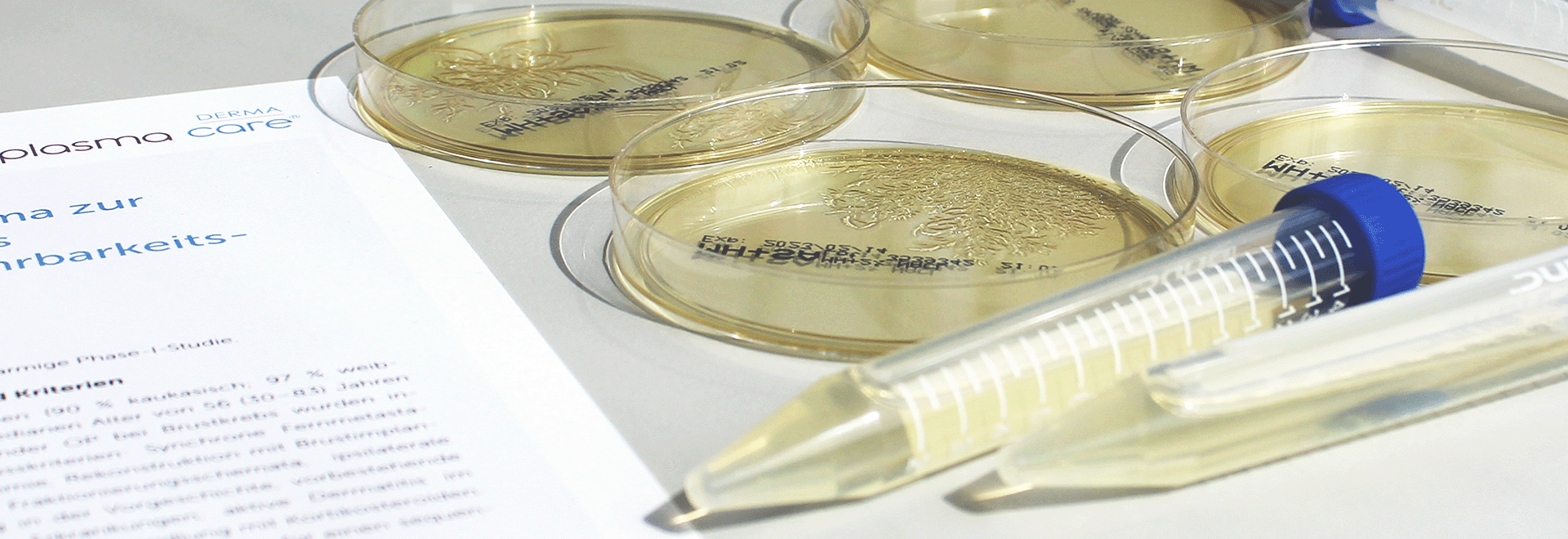Published studies and case studies

Published studies with plasma care®
Hygcen (2020) Skin disinfection test according to VAH Method 13 on natural skin flora and supplemented with E. coli
Scheper et al. (2021) Cold plasma therapy with the handheld device plasma care® improves the tendency to heal in problem wounds – 10 case studies from diabetological practice
Yuta Terabe et. al. (2021) Using cold plasma to treat chronic foot ulcer infection
Yuta Terabe et. al. (2021) Treating hard-to-heal skin and nail onychomycosis of diabetic foot with plasma therapy
Brüning et. al. (2021) Using cold atmospheric plasma to treat hard to heal wounds. A case study with 10 Patients (with 19 wounds) treated in a dermatological outpatient clinic
Hämmerle et. al. 2021; Positive effects of cold atmospheric plasma on pH in wounds: a pilot study
Dejonckheere et. al. 2022. Non-Invasive Physical Plasma for Preventing Radiation Dermatitis in Breast Cancer: A First-In-Human Feasibility Stud
Deitmerg et. al. 2022; Wundbehandlung mit Kaltplasma,
https://www.bibliomed-pflege.de/sp/artikel/47048-wundbehandlung-mit-kaltplasma
Dejonckheere et. al. 2024. Non-invasive physical plasma for preventing radiation dermatitis in breast cancer: Results from an intrapatient-randomised double-blind placebo-controlled trial
Ligresti C, et al. Use of Cold Plasma in the Treatment of Infected Wounds. J Surg Res Prac. 2024;5(1):1-10.
https://athenaeumpub.com/use-of-cold-plasma-in-the-treatment-of-infected-wounds/
Case studies from practice
Patient (77 years old), bedridden due to a spinal injury.
- Recurrence of a leg ulcer of unknown origin on the right lower leg, no edema, vascular status unclear.
- Wound healing had stagnated for several months; partly purulent coatings.
- Patient reported severe pain during mechanical wound cleansing.
Treatment success:
Patient is pain-free. Complete wound closure after 14 weeks.
Patient (50 years old) with diabetic foot syndrome.
- Infected ulcers above the metatarsal bones (left) and necrotic 4th toe. Amputation due to deterioration of the wound situation.
- Wound infection partially resistant corynebacteria, enterococci and
staphylococci.
Treatment success:
Amputation of the 5th toe could be averted. Complete wound closure on day 105.
Patientin (77 years) with wound healing disorder with known chronic venous insufficiency and cardiac insufficiency.
- Secondary healing wound (split-thickness skin graft and flap plasty) after trauma (contusion in a car accident).
- Infection with Enterobacter aerogenes, additional tendency to edema formation in lower legs.
Treatment success:
Complete wound closure two weeks after the last plasma treatment
Wundbehandlung mit dem plasma care®
Inbetriebnahme und Anwendung des plasma care®
Reinigung des plasma care®













